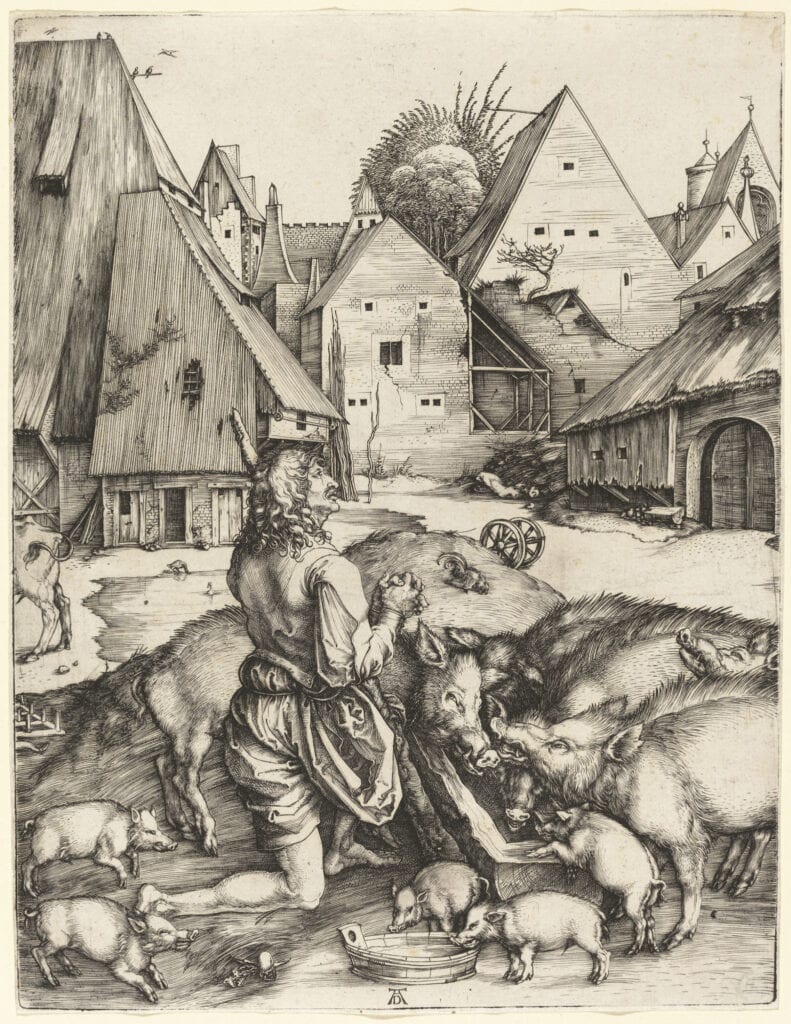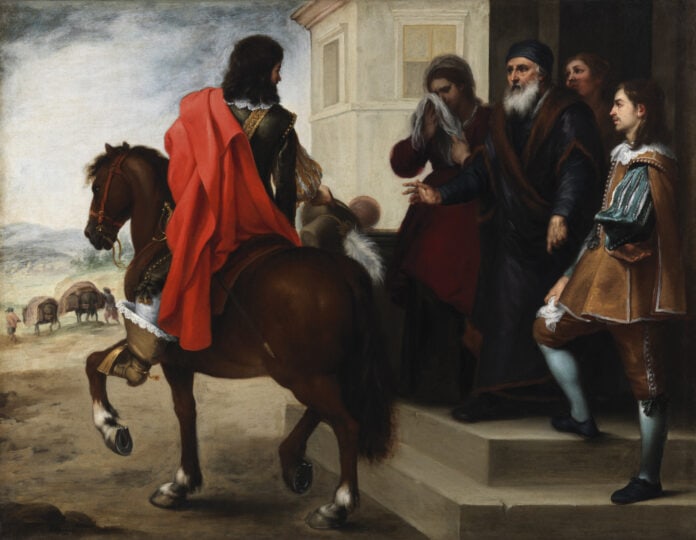“Murillo: Picturing the Prodigal Son” is a major exhibition that opened Feb. 20 at The Meadows Museum at SMU. The exhibition focuses on Bartolomé Esteban Murillo’s series of six paintings that illustrate the biblical parable of the prodigal son. The canvases are on loan from the National Gallery of Ireland, and the Meadows Museum is the only U.S. venue to have the exhibit.
The exhibition follows the series’ installation at Madrid’s Prado Museum. The only cycle by the artist that remains intact today, the series is joined by the two other finished paintings the artist dedicated to the subject.
Additional works on paper from the National Gallery of Art, Washington, DC; the Hispanic Society of America, New York; and The Metropolitan Museum of Art, New York; show other ways the prodigal son parable was visualized by Baroque artists in Europe. Works from the Meadows’ own collection and the Kimbell Art Museum’s “Four Figures on a Step” round out the installation. The exhibition is curated by Amanda W. Dotseth. and will be on view at the Meadows Museum through June 12.
Murillo: Picturing the Prodigal Son
This exhibition marks the first collaboration between the Meadows Museum and the National Gallery of Ireland (NGI). The NGI’s recent restoration of Murillo’s series, which included cleaning and extensive technical analysis, revealed new information about the artist’s technique. Other key works in the exhibition will be on public view for the first time following significant conservation.
“The Return of the Prodigal Son” (1667/70), from the National Gallery of Art, Washington, DC; has recently undergone extensive treatment in their lab with the support of the Meadows Museum. “Jacob Laying the Peeled Rods before the Flocks of Laban” (c. 1665), owned by the Meadows, was cleaned by the conservation department of the Kimbell Art Museum. The removal of aged, yellowed varnish from all of these paintings makes it possible to better appreciate the freshness and color of Murillo’s brushwork.
“We are thrilled to bring this remarkable series by Murillo from Dublin to Dallas for its debut on American soil. It is a true privilege to be able to display the six canvases depicting such a popular parable together with Murillo’s other interpretations of the prodigal son,” said Meadows Museum Director ad interim and Curator Amanda W. Dotseth. “The Meadows Museum is home to the largest number of paintings by Murillo in the United States and is the ideal venue to introduce this series to American audiences. We are very grateful to the National Gallery of Ireland and to the other lenders who made this extraordinary presentation possible.”
Bartolomé Esteban Murillo (1617–1682)
Among the most celebrated painters of Baroque Spain, Murillo’s works are enduringly popular among international collections. Although Murillo frequently painted religious subjects for his patrons in Seville, the prodigal son parable was somewhat unusual for the time.
This exhibition brings together a select group of 16th- and 17th-century images that take different approaches to the visualization of the same story. The episode near the end of the parable—the son’s return home to his forgiving father—is most widely recognized as the pivotal moment of the story. Murillo expands the narrative into six parts, however, focusing on the son’s actions and their consequences before his return home. The series demonstrates Murillo’s skill at staging and visualizing narrative. Each painting’s composition is independently representative but also cues sequential reading and the collective experience of the series as a whole.

The exhibition at the Meadows includes a number of etchings thought to be source material for Murillo. As the parable was not popular in Spain, Murillo likely turned to foreign prints easily accessible to him in cosmopolitan, 17th-century Seville. Etchings by Albrecht Dürer, Jacques Callot, and Pietro Testa included in the exhibition show what may have influenced Murillo, and also demonstrate the diversity of artistic treatments of the same subject matter.
The Exhibition Catalogue
The exhibition catalogue features essays by scholars based in Ireland and the U.S., which offer theological, art historical, technical, and historiographical perspectives on the series. Authors include Jessica A. Boon, Aoife Brady, Muirne Lydon, Pauline Swords, and a preface is written by Peter Cherry. The catalogue is dedicated to Mark A. Roglán, the renowned director of the Meadows, He passed away from cancer earlier this year after twenty years at the helm of the institution. Roglán was a highly regarded scholar of 19th- and 20th-century Spanish art who authored, contributed to and edited a number of groundbreaking volumes dedicated to the history of Spanish art. This exhibition catalogue will be the last publication for which he served as a co-editor.
“Murillo: Picturing the Prodigal Son and the accompanying catalogue are very much the result of Mark’s passion for sharing the art of Spain with the world,” said Linda P. Custard, SMU Trustee Emerita and Chair of the Meadows Museum Advisory Council. “Although Mark is not here to celebrate the opening of the exhibition with us, every visitor to the museum will be experiencing his vision and his legacy.”
The Meadows Museum
is the leading U.S. institution focused on the study and presentation of the art of Spain. In 1962, Dallas businessman and philanthropist Algur H. Meadows donated his private collection of Spanish paintings, as well as funds to start a museum, to Southern Methodist University. The museum opened to the public in 1965, marking the first step in fulfilling Meadows’s vision to create “a small Prado for Texas.” Today, the Meadows is home to one of the largest and most comprehensive collections of Spanish art outside of Spain. The collection spans from the 10th to the 21st centuries and includes medieval objects, Renaissance and Baroque sculptures, and major paintings by Golden Age and modern masters.












